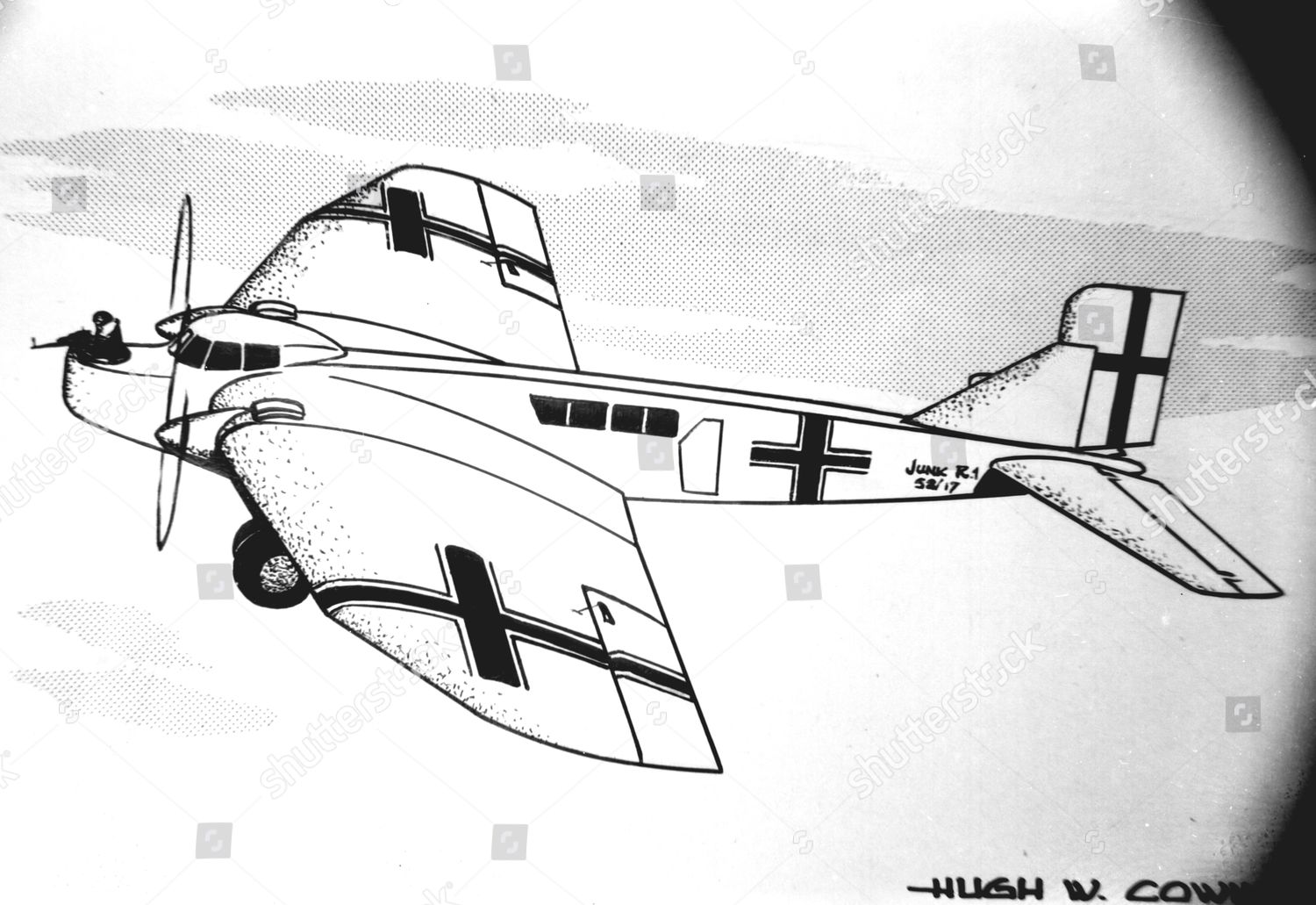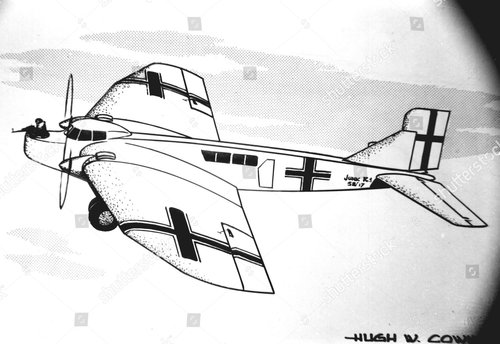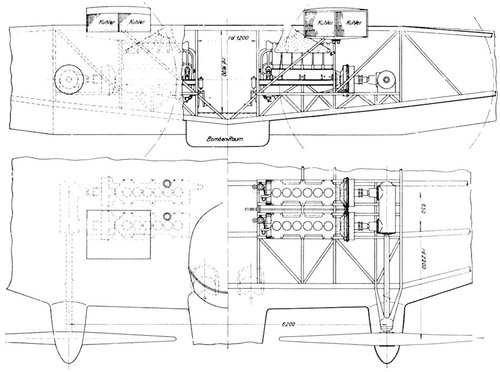I am currently reading an East German book (source details below) which gives details of three Junkers R series aeroplanes from 1918. The information differs from the earlier posts and the Hugo Junkers website http://hugojunkers.pytalhost.com/ju_ri_a1.htm .
I detail the information below for consideration, extracted from the book. It could be that the R.II is the R.II 58/18 mentioned elsewhere, evolved from the 1915 R.I twin engine bomber.
The Junkers R. series was a multi-engine bomber exercise covering three different types of configuration. All design work was undertaken in 1918. None were completed.
R.1 - [R.I?] four engine giant monoplane heavy bomber project in two versions, both low-wing. Also known as Junkers Project 4.
R.1 Version 1:
Wing Span : 35.00 m
Wing Area ; 200 sq m
Length 22.30 m
Engines: 4 x Daimler D.IVa (191 kW/260 hp each)
R.1 Version 2:
Wing Span: 38.50 m
Wing Area: 220 sq m
Length: 24.00 m
Engines: 4 x Daimler D.IVa (191 kW/260 hp each)
Overall Weight: 10,000 kg
Empty Weight: 6,000 kg
Disposable Load Weight: 4,000 kg
Maximum Speed: 180 km/h at 2,000 m and 160 km/h at 4,000 m
The thickness of the wings of this versions was about 1.6 m, allowing maintenance by crew during flight. The wings also contained two main fuel tanks with a 1,000 litre total capacity.The tail rudder was operated by a power boosting auxiliary engine, meaning the pilot needed no extra force to control the rudder.
Trial construction on a small number of the parts was underway when the project ceased in 1918, even befor the war had ended.
R.2 - [R.II] twin engine giant monoplane heavy bomber project. Also known as Junkers Project 5.
This project was mentioned in the Patent Spec 31 36 92 dated 23 April 1918 and was described as a monoplane with internal construction wings. Main difference compared to the R.I was double fins and bigger ailerons.
Wing Span: 24.00 m
Length :13.00 m
Engines: 2 x Mercedes D.IVa (191 kW/260 hp each)
Maximum Speed: 170 km/h
These R.2 details were estimates from contemporary literature but the aeroplane was believed to offer better performance than conventional biplanes.
R.3 - [R.III] four engine giant flying boat project. Also known as Junkers Project 6.
Wing Span: 80.00 m
Length : 38.00 m
Engines: 4 x Junkers Diesel (753 kW/1,000 hp each)
Maximum Take-off Weight: 48,000 kg
This design was started in June 1918 and was a large sesquiplane flying boat. The engines were never built. The machines hull was between 10 and 12 metres wide. The wing centre section was around 45 metres long and 2.4 metres thick and 12 metres broad. Like the R.I, it allowed engineers access to the engines in flight.
Sources:
Hugo Junkers and his Aircraft (Gunter Schmitt) Transpress (GDR) 1988 ISBN 3344003038




